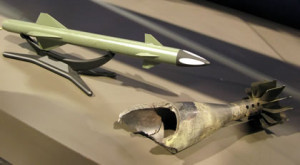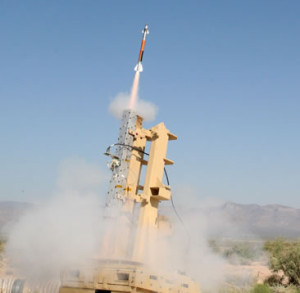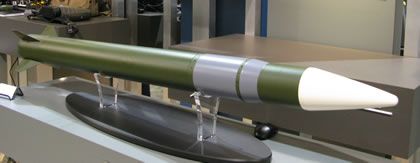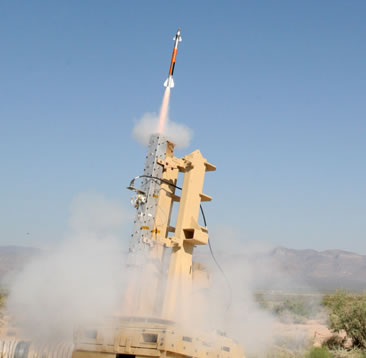
Lockheed Martin conducted a successful controlled vehicle test flight of the missile interceptor effector element of the Extended Area Protection and Survivability Integrated Demonstration (EAPS ID) program The test was conducted on May 26 at White Sands Missile Range, N.M. Data collected at this test will support the guided flight tests, against live RAM targets, beginning in the second half of 2012.
Earlier in March 2012 the Army selected the competing design by Northrop Grumman to proceed to the next level of development. Both companies have yet to demonstrate the technologies developed under the first phase. Lockheed Martin EAPS solution uses a Miniature Hit-to-Kill (MHTK) interceptor that defeats Rocket, Artillery and Mortar (RAM) targets at ranges greatly exceeding those of current systems (few kilometers, as characterized by the Phalanx or AHED rapid fire cannons).

Unlike the cannon’s unguided projectiles, the EAPS interceptor is a highly agile missile, designed as a small hit-to-kill interceptor that weighs approximately 3 kilograms. It is less than 50 millimeters in diameter and less than 1 meter long. The interceptor is designed to be affordable and will meet the AMRDEC Average Unit Production Cost goal at specified quantities. Paired with a fire control sensor, EAPS defeats targets through body-to-body impact at tactical ranges.During the flight test, the tactically configured MHTK interceptor was launched vertically and then conducted a series of maneuvers to demonstrate required performance while capturing data.
“Providing improved protection to our deployed soldiers and other personnel is extremely important; the AMRDEC is very pleased with this test. This flight test shows excellent progress in demonstrating the technologies that will be required for employing the MHTK concept in the defeat of RAM threats,” said Loretta Painter, AMRDEC EAPS program director. “This flight test provided the program with critical data, which is now being analyzed and the resultant will be incorporated into the system as this effort moves into guided flight tests, intercepting RAM targets.”
The company conducted this test in collaboration with the U.S. Army Research Development & Engineering Command/Aviation Missile Research Development & Engineering Center (RDECOM/AMRDEC).
Other US companies involved in C-RAM interceptor programs include Raytheon, which was recently awarded a $79.2 million contract under the Accelerated Improve Intercept Initiative (AI3) and the EAPS-ID Battle Element (BE), for which Northrop Grumman was selected as sole source earlier this year. Raytheon was awarded in March, where it will combine a Raytheon-developed interceptor with government-furnished launcher, fire-control and command-and-control (C2) systems. Raytheon has been cooperating with Israel’s RAFAEL Advanced Defense Systems on potential partnership and marketing of Rafael’s Iron Dome in the US market. Raytheon said in its announcement it will leverage ‘mature technology’ from existing programs.
The purpose of the EAPS ID is to create a mobile missile system (or BE) that can engage multiple, in-flight RAM threats accurately, and protect forward-deployed forces over a larger defended area at a much lower system cost, and cost-per-hit, than is currently possible. The first phase, which covered the development and demonstration of miniature missiles, included development by both Lockheed Martin and Northrop of low-cost vertical-launch interceptor missiles.





















